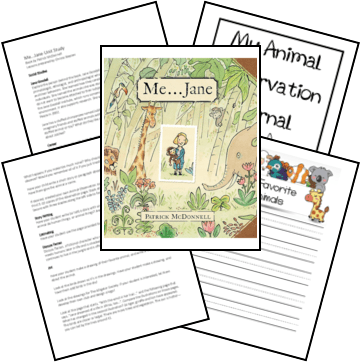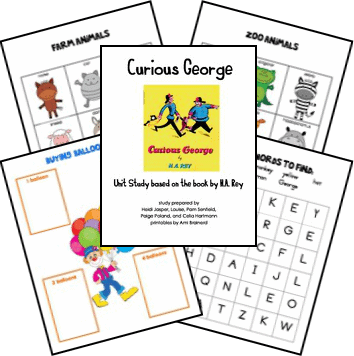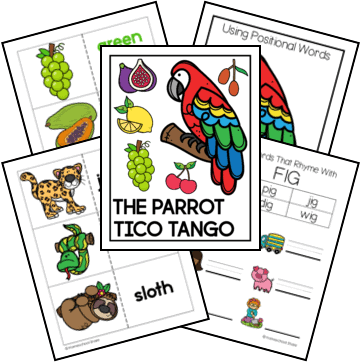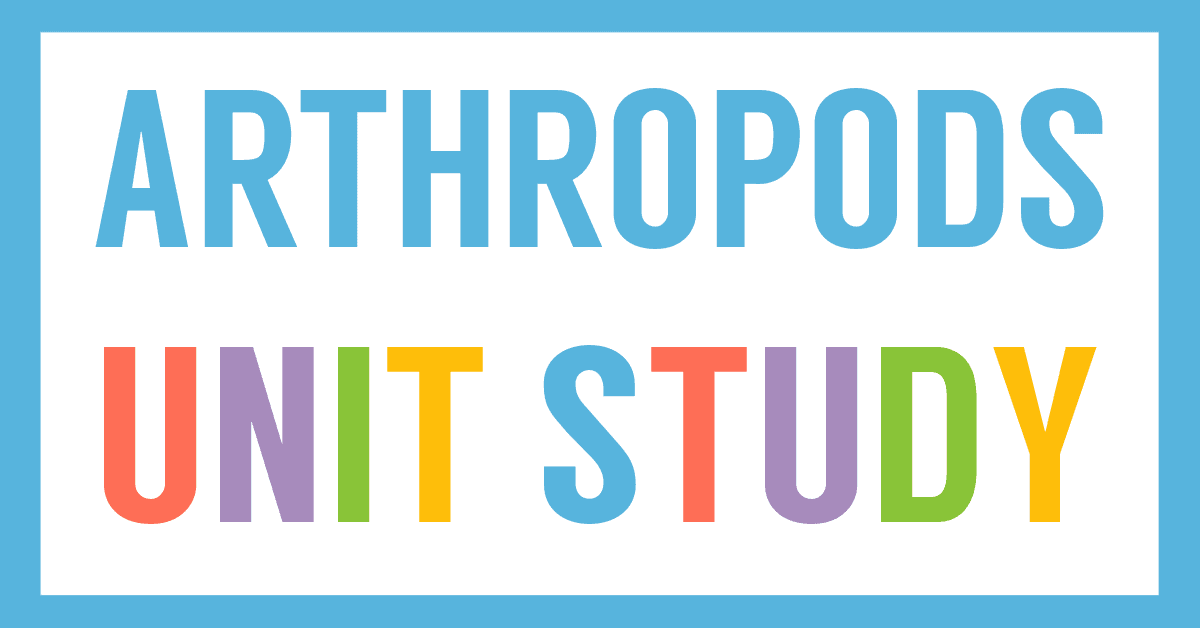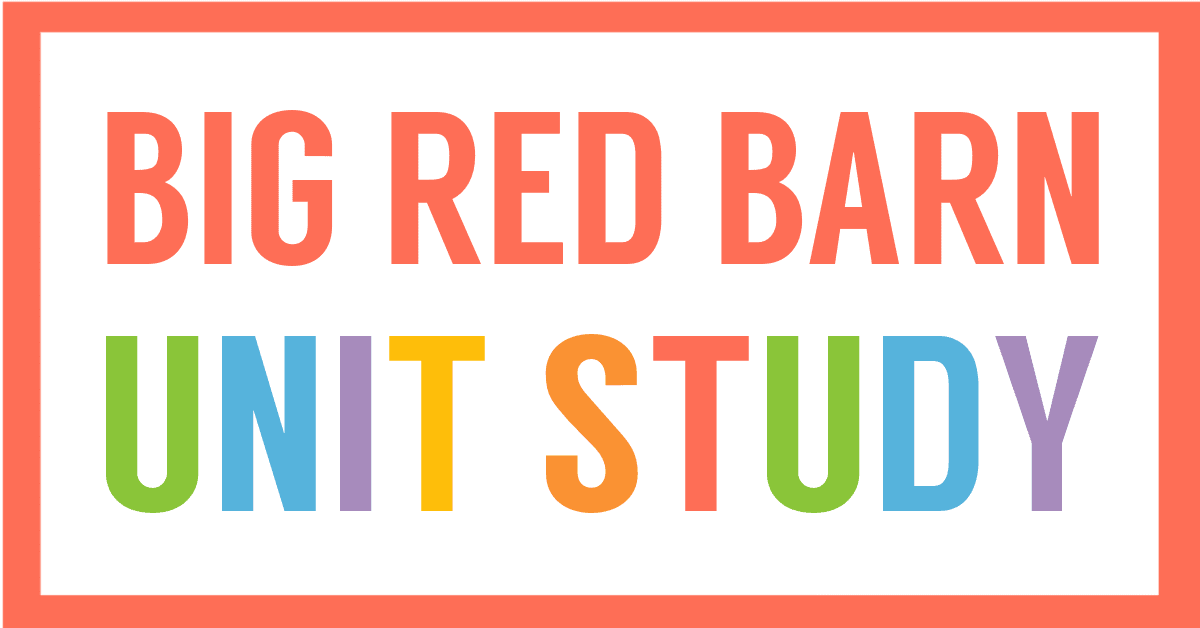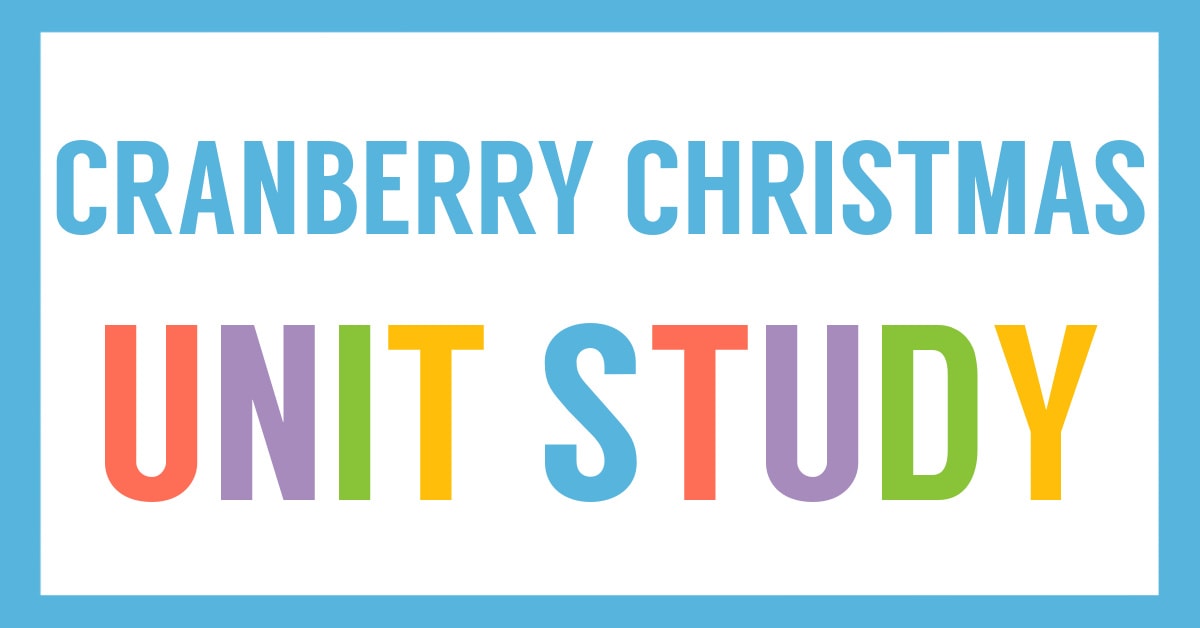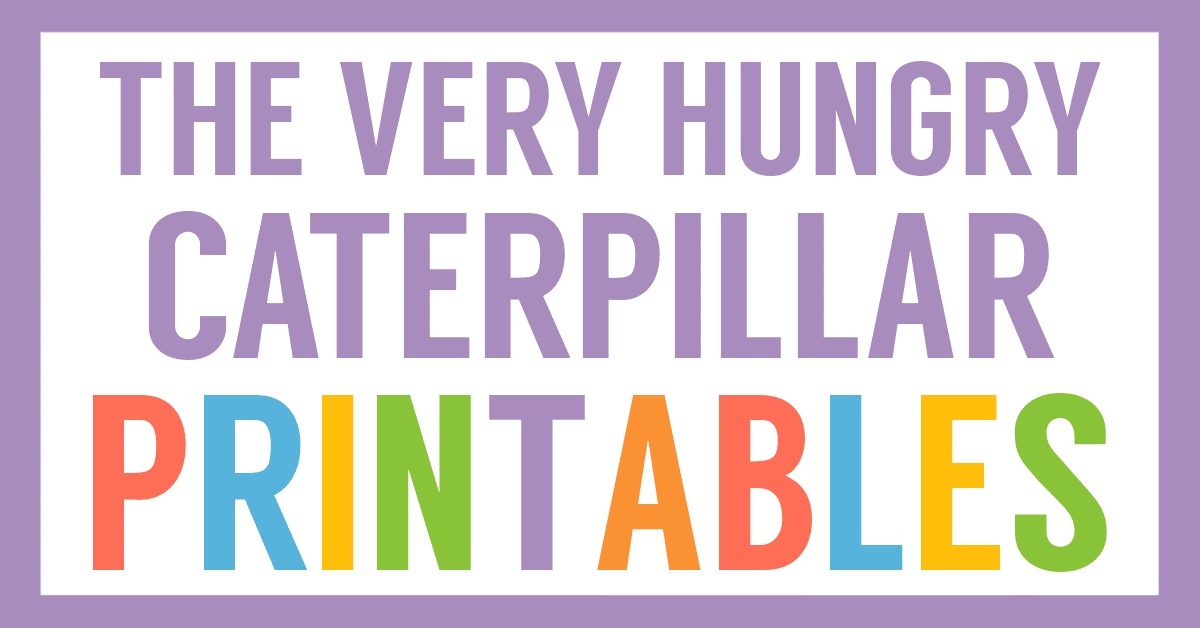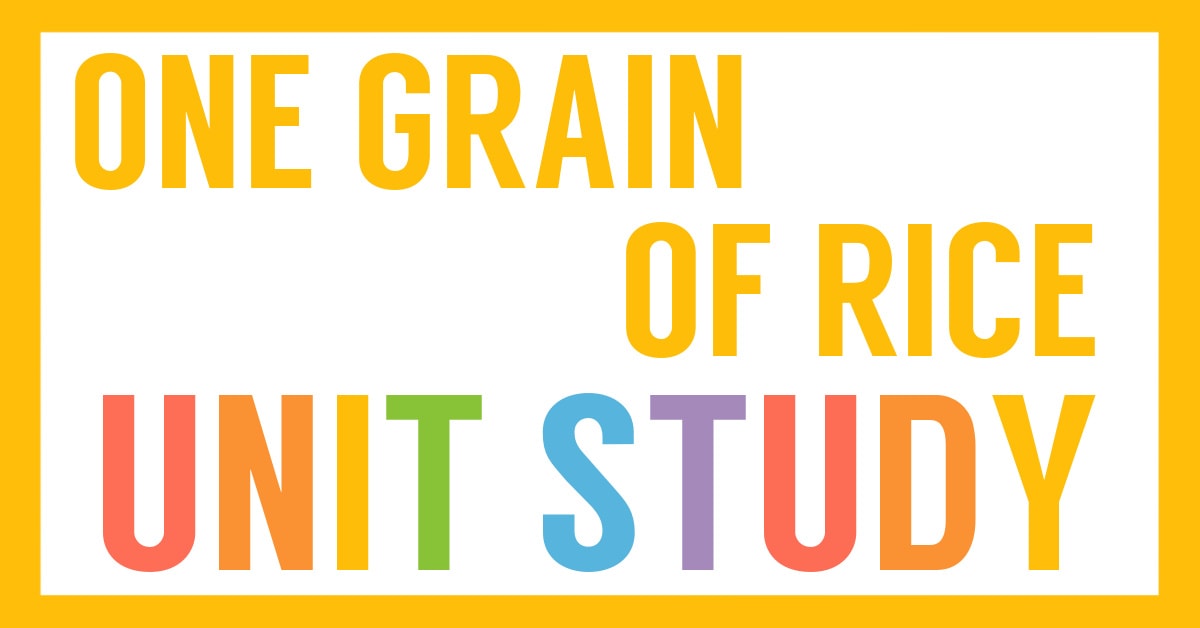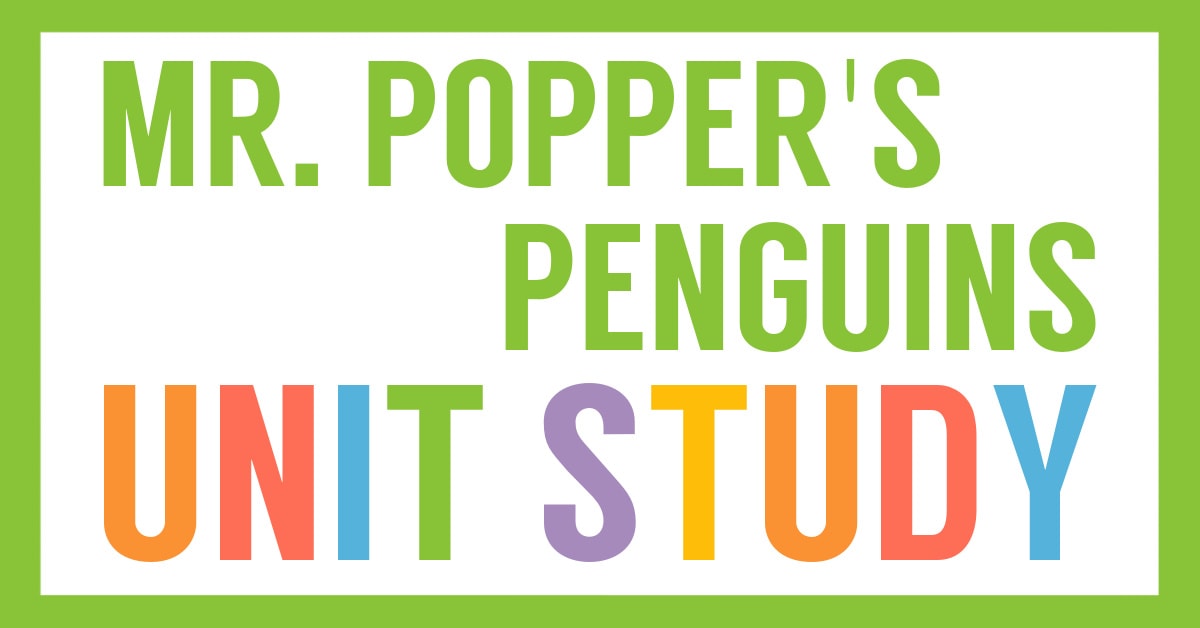Affiliate Disclaimer
We sometimes use affiliate links in our content. This won’t cost you anything, but it helps us to keep the site running. Thanks for your support.
Jump in and explore the adventurous dream of a famous naturalist with this free Jane Goodall lesson plan.
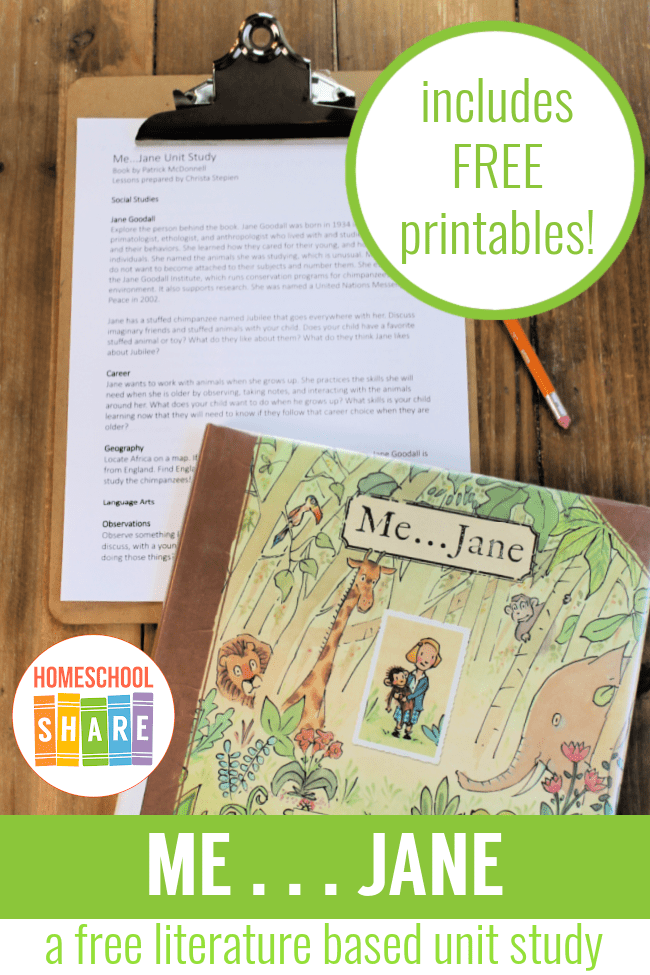
Thanks to Christa Stephien for preparing this Me . . . Jane unit study for Homeschool Share.
Me . . . Jane Book Summary
In his characteristic heartwarming style, Patrick McDonnell tells the story of the young Jane Goodall and her special childhood toy chimpanzee named Jubilee. As the young Jane observes the natural world around her with wonder, she dreams of “a life living with and helping all animals,” until one day she finds that her dream has come true.
from Me . . . Jane at amazon.com
Jane Goodall Lesson Plan
This unit study includes a variety of lessons and activities for your student.
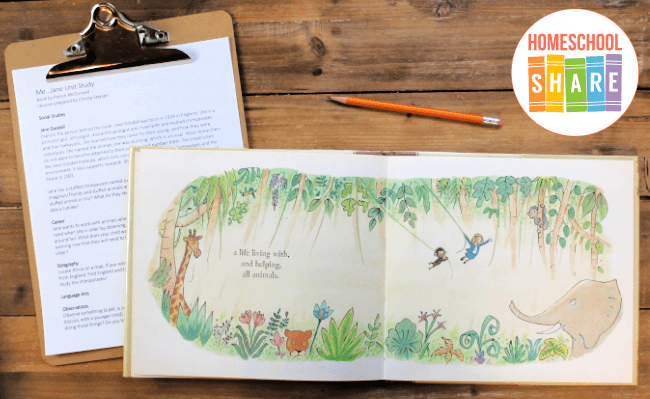
Social Studies Lessons
Jane Goodall
Explore the person behind the book. Jane Goodall was born in 1934 in England. She is a primatologist, ethologist, and anthropologist who lived with and studied chimpanzees and their behaviors. She learned how they cared for their young, and how they were individuals. She named the animals she was studying, which is unusual. Most researchers do not want to become attached to their subjects and number them. She established the Jane Goodall Institute, which runs conservation programs for chimpanzees and the environment.
Stuffed Animals
Jane has a stuffed chimpanzee named Jubilee that goes everywhere with her. Discuss imaginary friends and stuffed animals with your child. Does your child have a favorite stuffed animal or toy? What do they like about them? What do they think Jane likes about Jubilee?
Career
Jane wants to work with animals when she grows up. She practices the skills she will need when she is older by observing, taking notes, and interacting with the animals around her. What does your child want to do when he grows up? What skills is your child learning now that they will need to know if they follow that career choice when they are older?
Geography
Locate Africa on a map. If you want to be more specific, locate Tanzania. Jane Goodall is from England. Find England and trace with your finger how far Jane had to travel to go study the chimpanzees!
Language Arts Lessons
Observations and Note Keeping
Observe something (a pet, a squirrel or bird, an animal at the zoo) and take notes (or just discuss, with a younger child) about the things that the animal is doing. Why are they doing those things? Do you have to be quiet to let the animal continue what it is doing? What happens if you make too much noise? Why should you write down what you observe? Would you remember all of it if you just tried to keep it in your mind?
Have your child write a short story or paragraph about the animal that they observed. Have them give the animal a name.
Biography
Read “About Jane Goodall” in the back of the book.
Story Writing
Have your student write (or tell) a story with an animal as the main character. Will the animal do human things, or animal things? Are people and animals sometimes similar?
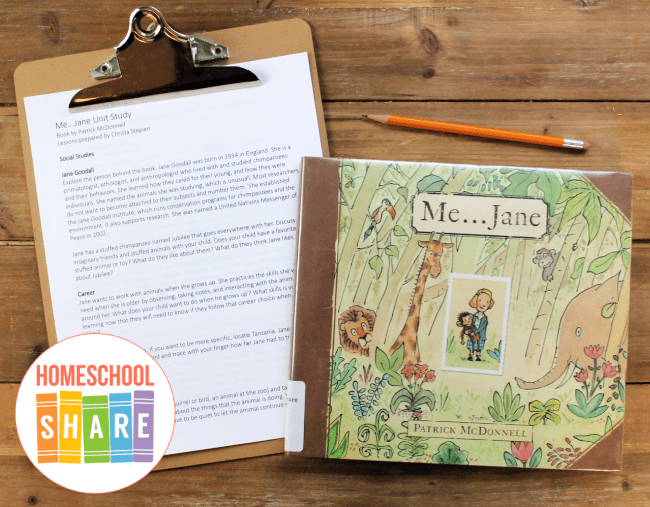
Art Lessons
Have your student make a drawing of their favorite animal, and write a few sentences about the animal.
Look at the birds drawn as V’s in the drawings. Have your student make a drawing, and have them add birds in the sky!
Look at the drawings for The Alligator Society. If your student is interested, let them develop their own club and design a logo!
Look at the page that starts, “With the wind in her hair…” and the following page that says, “Jane dreamed of a life in Africa, too…”. Compare the illustrations on those pages. What has changed in the second illustration? (A tiger, giraffe and lion have appeared. The birds are closer or larger. There are more trees and vegetation. The sun is hotter—you can tell by the lines around it).
Math Lessons
Measuring
Have your student line up all of his stuffed animals. Measure them. Record the measurements on the page provided. Compare the sizes.
Science
Eggs
Where do (chicken) eggs come from? Discuss eggs hatching—it takes 21 days for a chicken to hatch an egg!
Heartbeat
Let your child listen to your heartbeat (or his own, if possible)
Observation
Discuss what kinds of things you would see birds, spiders and squirrels doing if you observed them. Or, actually observe them!
African Animals
Does your child know any other animals that live in Africa? (Examples include: Lion, Elephant, Leopard, Rhino, Giraffe, Zebra, Hippopotamus, Warthog, Wildebeest, and Buffalo.)
Animal Brains
Look at the different size brains in the illustrations. Why would animals have different sized brains? As you might imagine, larger animals have larger brains. However, this does not mean that animals with larger brains are smarter than animals with smaller brains. For example, a larger brain is necessary to control larger muscles in larger animals and a larger brain is necessary to process more sensory information from the skin in larger animals–this has nothing to do with intelligence.
Beech Tree
The tree in the illustrations is a Beech Tree. Does your child have a favorite kind of tree? What kinds of trees do you have in your yard or geographic area?
Me . . . Jane Printables
This Me . . . Jane unit study includes a few printable pages for your student:
- Animal Observation Journal
- Stuffed Animal Measurement Chart
- My Favorite Animals Writing Page
Download Your Jane Goodall Lesson Plan and Printables
Grab your Me . . . Jane unit study and printables in one easy download by clicking the image below.
More Free Resources for Your Student
If your student enjoyed this Me . . . Jane unit study, check out these:

